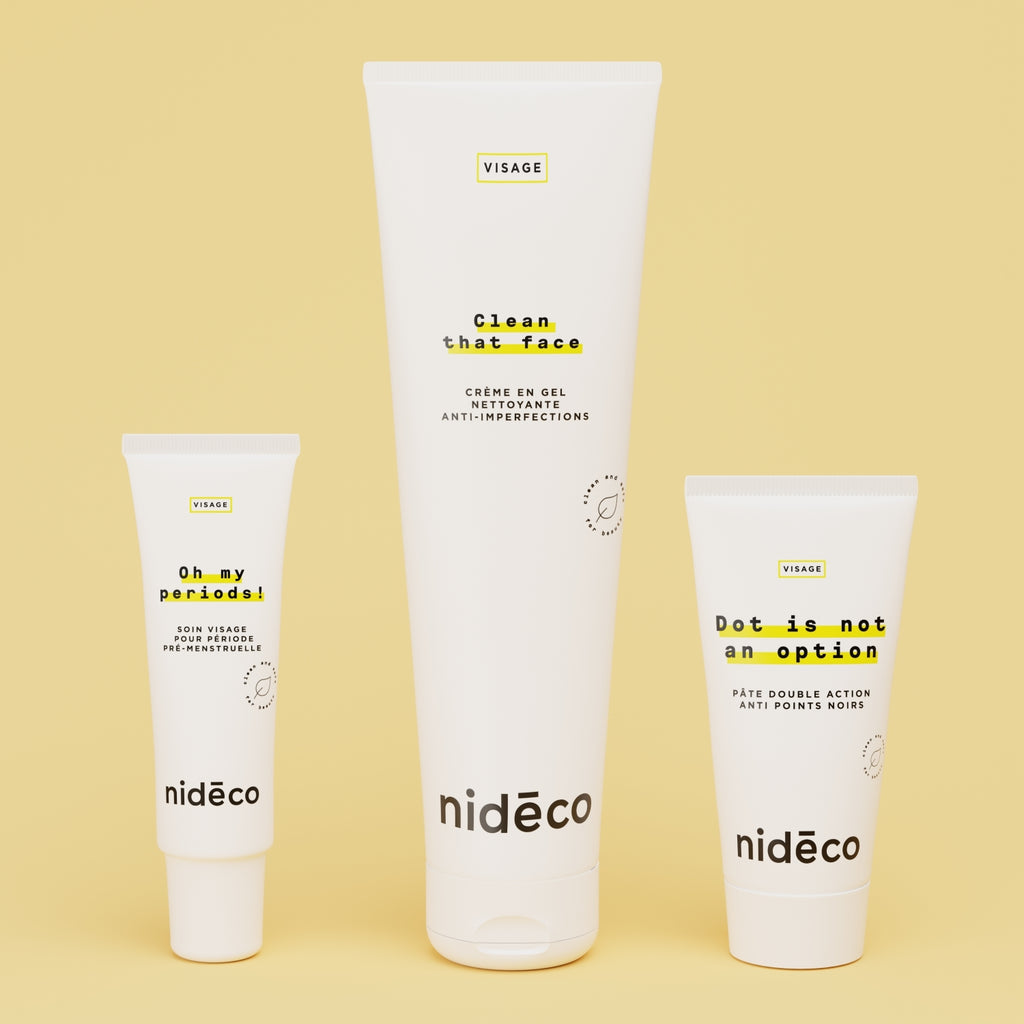How to take care of your weakened breasts?

The bust is a part of the body often neglected in skincare routines, yet it deserves all our attention. The skin is thin and fragile, and this area is subject to numerous hormonal variations, menstrual cycles, weight fluctuations and aging.
Here are our tips for caring for your breasts.
1. The effects of hormonal variations on the bust
Hormones play a major role in a woman's life, and have a direct impact on the breasts. Menstrual cycles, pregnancy and menopause cause significant hormonal fluctuations that can alter the size, firmness and sensitivity of the breasts.
During menstruation: Hormonal variations before and during menstruation often cause swelling and increased sensitivity of the breasts. This is due to the increase in estrogen and progesterone, which can also lead to a feeling of heaviness or tension in the breasts.
Pregnancy: Breasts undergo many changes in preparation for breastfeeding. Skin stretches and mammary glands develop, which can lead to stretch marks and loss of firmness after delivery.
Menopause: estrogen levels drop, which can lead to drier skin and thinner support tissues. Breasts may lose volume and appear less toned. To relieve the discomforts associated with hormonal variations, it's important to moisturize the skin of the breasts daily with a cream rich in moisturizing and soothing ingredients, such as shea butter. In cases of heightened sensitivity, active ingredients such as chamomile can also help relieve pain and reduce inflammation.
2. Weight gain and its impact on the breasts
Weight gain or loss has a direct impact on the breasts, which are mainly composed of adipose tissue.
Weight gain can increase breast volume, which can cause stretching of the skin and, eventually, stretch marks.
Conversely, rapid weight loss can make breasts less firm.
To help maintain breast firmness, here are a few tips:
- Gentle exfoliation: Exfoliating the skin on the breasts once or twice a week helps stimulate blood circulation and promotes cell renewal, which can improve skin elasticity. Use a gentle exfoliant to avoid aggressing the skin.
- Intense hydration: Applying an enveloping cream containing argan oil, for example, can help keep skin supple and prevent stretch marks. Horsetail will also promote skin elasticity, and help boost collagen production.
- Specific exercises: Strengthening the pectoral muscles can help support the breasts and prevent sagging. Exercises such as push-ups or dumbbell bench presses help strengthen the area.
3. Breast changes with age
As we age, the skin loses its elasticity and the tissues supporting the breasts become looser. This situation can be exacerbated by pregnancy, weight changes and the effects of gravity over the years.
To help maintain its shape, here are our recommendations:
- Wearing the right bra: Choosing a quality bra that offers good support without being too tight is essential. An unsuitable bra can cause pain and accentuate sagging tissue.
- Chest massages: Massaging the chest regularly in circular movements with a moisturizing cream can stimulate blood circulation and help maintain skin tone.
- Protecting skin from the sun: The skin on the breasts is particularly sensitive to UV rays. Applying sunscreen with a high protection factor is essential to prevent premature aging of the skin and the appearance of pigmentation spots.
As you can see, for complete breast care, it's important to adopt a global approach:
- Opt for a cream specially formulated for the décolleté. Dina @maghribiyates has designed Tits party, a non-greasy, nourishing mask to soothe and moisturize breasts and maintain their natural shape. Applied with a circular massage, it not only decongests and soothes, but also tones the breasts and boosts blood circulation.
- Good posture: Maintaining an upright posture helps prevent sagging breasts. Poor posture puts pressure on the tissues and can exacerbate sagging.
- Consult a professional if you experience pain: If you feel unusual pain in your chest, it's important to consult a doctor to make sure there's no underlying pathology.
And remember, every breast is unique and deserves all the attention it deserves!




























